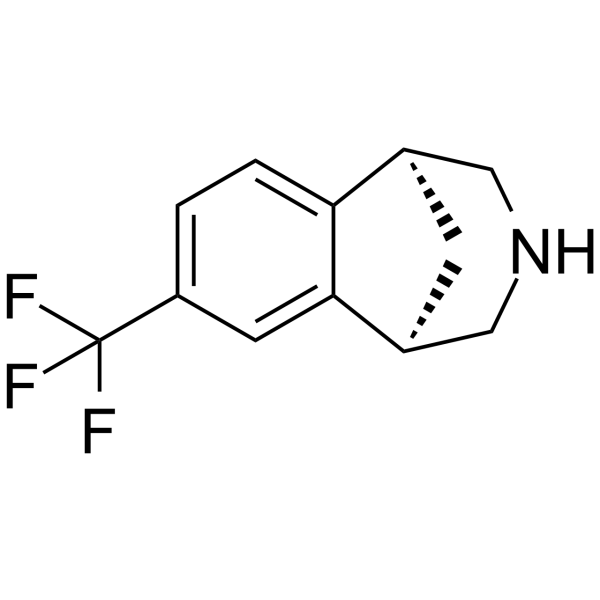CP-601932
Modify Date: 2024-01-08 11:12:36

CP-601932 structure
|
Common Name | CP-601932 | ||
|---|---|---|---|---|
| CAS Number | 357425-68-4 | Molecular Weight | 227.23 | |
| Density | N/A | Boiling Point | N/A | |
| Molecular Formula | C12H12F3N | Melting Point | N/A | |
| MSDS | N/A | Flash Point | N/A | |
Use of CP-601932CP-601932 ((1S,5R)-CP-601927) is a high-affinity partial agonist at α3β4 nAChR (EC50=~ 3 μM). CP-601932 has the same high-binding affinity at α3β4 (Ki=21 nM) as at α4β2 nAChRs (Ki=21 nM) and an order of magnitude lower affinity for α6 and α7 nAChR subtypes. CP-601932 selectively decreases ethanol but not sucrose consumption and operant self-administration following long-term exposure. CP-601932 readily penetrates the CNS[1]. |
| Name | CP-601932 |
|---|
| Description | CP-601932 ((1S,5R)-CP-601927) is a high-affinity partial agonist at α3β4 nAChR (EC50=~ 3 μM). CP-601932 has the same high-binding affinity at α3β4 (Ki=21 nM) as at α4β2 nAChRs (Ki=21 nM) and an order of magnitude lower affinity for α6 and α7 nAChR subtypes. CP-601932 selectively decreases ethanol but not sucrose consumption and operant self-administration following long-term exposure. CP-601932 readily penetrates the CNS[1]. |
|---|---|
| Related Catalog | |
| In Vitro | CP-601932 (10 mg/kg; s.c; adult male Sprague-Dawley rats) decreases active lever presses for 10% ethanol, but not 5% sucrose in the operant self-administration paradigm[1]. CP-601932 (adult male Sprague-Dawley rats) readily penetrates the CNS and at 30 min reaches maximal Cb,u values of 340 nM after 5 mg/kg and 710 nM after 10 mg/kg. Brain concentrations of CP-601932 decline very slowly and levels stay relatively high, eg, 530 nM at 5 h and 85 nM at 24 h after 10 mg/kg[1]. |
| References |
| Molecular Formula | C12H12F3N |
|---|---|
| Molecular Weight | 227.23 |